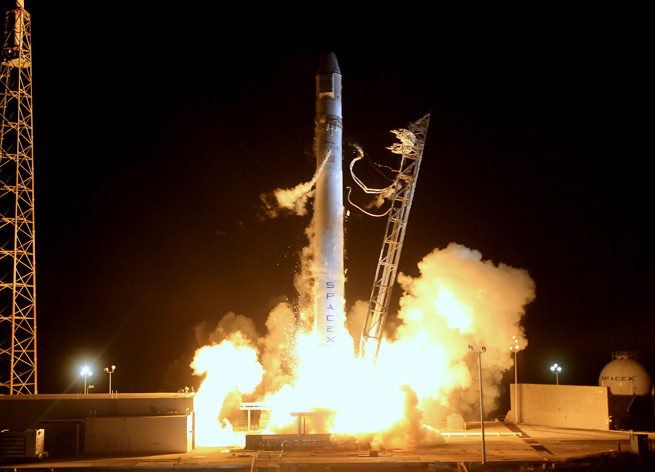SpaceX successfully launched a new, upgraded Falcon 9 rocket with 60 percent more powerful engines yesterday. The demonstration flight appeared to go off without a hitch, as the rocket reached a speed of 5 kilometers/second and an altitude of 310 kilometers within five minutes of launch.
The big upgrade, though, is not the extra power.
The innovative space company’s Falcon 9 is SpaceX’s first reusable vehicle — potentially.
The goal with the spacecraft is to be able to recover the main part of the rocket intact after it falls back to Earth. Currently, SpaceX rockets crash in the ocean in pieces after a boost to orbit and are not reusable, but the Falcon 9’s boost stage has the capability to either gently splash down or even potentially land on its tail — as the company’s Grasshopper rocket demonstrated in June of this year.
Three-quarters of the cost of the rocket is the boost stage.
The flight was to blast the Canadian Space Agency’s Cassiope satellite into orbit to “unravel the mysteries of space weather.” SpaceX has also won another contract for the largest-ever Canadian space program, which begins in 2018.
The new Falcon has over one million pounds of thrust, enough, CEO Elon Musk says, to “lift a skyscraper.”
The launch was a success, Musk told Reuters: “It went better than expected. It was incredibly smooth.”


